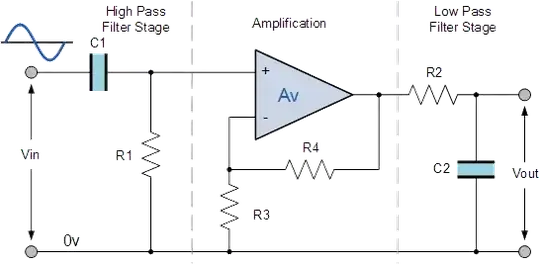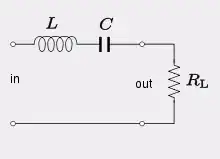To pass a certain frequency, you can either have a resonant LC or a bandpass filter made from 2 capacitors and 2 resistors (a high pass and low pass filter put back to back. What is the difference between these two circuits, and is there an advantage of one over the other?
2 Answers
An LC filter is superior to using RC low and high pass filters for several reasons. One, it will provide a 12 dB/octave rolloff on both sides of the desired frequency while a single RC filter can only provide a 6 dB/octave rolloff. Two, it will automatically provide a symmetrical response around its center frequency while the 2 RC filters must have matching components to achieve this. Three, the Q of an LC bandpass filter, if a good quality inductor is used, will exceed that possible with RC filters. However, LC filters can be physically large depending on the frequency. Also inductors are subject to non-linear effects if the signal levels are large.
- 15,967
- 1
- 26
- 28
Assume you have two RC filters cascaded (with an op-amp buffer to remove the interaction between the two filters), one high-pass and one low-pass with the same corner frequency and unity gain buffer:

The overall transfer function is:
$$H(s) = \dfrac{\frac{s}{RC}}{s + \frac{1}{RC}} \dfrac{1}{s + \frac{1}{RC}} = \dfrac{1}{2}\dfrac{\frac{2s}{RC}}{s^2 + \frac{2s}{RC} + (\frac{1}{RC})^2}$$
By inspection, this filter has \$Q = \frac{1}{2}\$ and that's the highest Q one can get with this topology.
Now, assume you have a series RLC bandpass filter instead:

where $$H(s) = \dfrac{s\frac{R_L}{L}}{s^2 + s\frac{R_L}{L} + \frac{1}{LC}} $$
By inspection, this filter has \$Q = \frac{1}{R_L}\sqrt{\frac{L}{C}}\$ thus, the Q of this filter can be much higher than 1/2.
So, if you need a selective, high-Q filter, you would not want to use the RC HPF - LPF cascade.
- 26,630
- 1
- 25
- 63